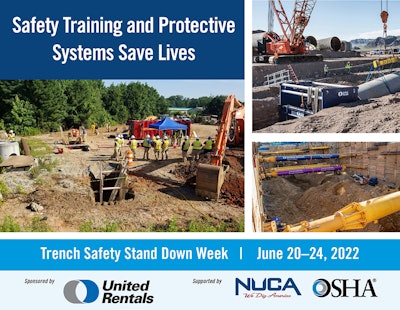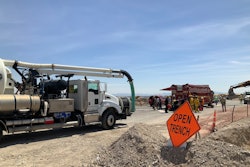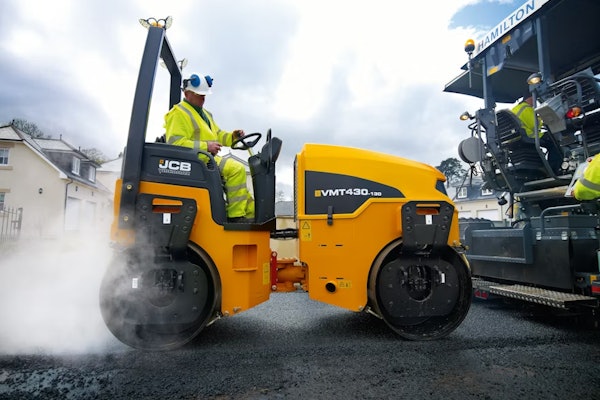
One cubic yard of dirt can weigh as much as 3,000 pounds, or as much as a small pickup truck, and when it’s caving in on a worker, it often leads to fatal crushing and suffocation.
There is no time for a worker to react to these sudden collapses. The rescues – which often turn into body recovery missions – are difficult, painstaking and can take hours. Meanwhile, family, friends and coworkers face the heartbreaking frustration of helplessly watching and waiting.
As the construction industry heads into the Trench Safety Stand Down from June 20 to 24, 11 workers have died in trench collapses so far this year – a stark reminder of the dangers of cave-ins.
In all, 246 fatalities in trenches have occurred since 2011, according to Equipment World searches of media reports, online OSHA records, and data from the U.S. Bureau of Labor and Statistics.
Below are details for the Trench Safety Stand Down, as well as tips every worker should know before working in a trench or excavation:
The Stand Down
The Trench Safety Stand Down began four years ago with a series of organized events to bring more attention to trench safety for the utility construction industry. The event – started by the National Utility Contractors – is used by industry safety professionals for such things as safety training, educational seminars and live demonstrations of trench rescues. The U.S. Occupational Safety & Health Administration is also a collaborator, and United Rentals is the corporate sponsor. The week is also part of NUCA’s declared Trench Safety Month, held each June.
The goal of the Stand Down is for employers to talk directly with workers about trench safety by taking a break during the day and holding a toolbox talk or other safety activity.
“These Stand Downs will focus on trench and excavation hazards and reinforce the importance of using trench protective systems and protecting workers from trenching hazards,” NUCA says.
Participants receive a certificate of participation, as well as hardhat stickers from NUCA.
In 2019, NUCA reported, 47,000 industry employees and first responders participated in the Stand Down at more than 4,500 jobsites. Though it was founded by the utility industry, anyone can participate.
Those who want to participate can go to NUCA’s website where they will also find a variety of safety resources, including a trench safety toolbox talk in English and Spanish.
Why workers die
The leading reason for OSHA trench violations is failure by the employer to provide adequate cave-in protection.
Other violations include:
- Failure to provide a ladder or other proper means of entering and exiting a trench.
- Placing spoil too close to a trench where rock and dirt could fall in on employees.
- Failure to provide daily inspections of excavations.
- Failure by the designated competent person on the jobsite to protect workers from potential cave-in.
- Hazards created by water accumulating in a trench.
How not to die
Under OSHA regulations, all trenches and excavations 5 feet or deeper must have some form of cave-in protection. OSHA-approved protection systems follow the "Three S's":
- Slope or bench trench walls by cutting back the trench wall at an angle inclined away from the excavation.
- Shore trench walls by installing aluminum hydraulic or other types of supports to prevent soil movement.
- Shield trench walls by using trench boxes or other types of supports to prevent soil cave-ins.
Trenches 20 feet or deeper must have protective systems designed by a registered professional engineer.
NUCA notes that trenches as shallow as 3 to 4 feet deep can also prove fatal, and they should be inspected by a competent person before entering. OSHA requires a jobsite to have a competent person designated to look out for hazards and keep workers safely from them.
Never do this
Along with cave-in protection, OSHA says a trench or excavation should never be entered unless the following conditions are met:
- It has some form of cave-in protection.
- It has been properly inspected by a competent person.
- There is a safe way to enter and exit trenches 4 feet or deeper, such as a ladder with its top at least 3 feet above the trench edge.
- Equipment and materials are at least 2 feet away from the edge.
- It is free of standing water and atmospheric hazards.
Always do this
NUCA also offers the following safety tips:
- Locate all underground utilities before digging.
- Stay inside the area that has been sloped, shored or shielded. Don't work outside it – not even for a moment.
- Eliminate or control water accumulation before entering the trench.
- Stay alert when working in or near previously disturbed soil conditions.
- Keep vehicles away from the edge of the trench.
- Check regularly for hazardous materials and oxygen levels in the trench.
- Make sure running machines are always attended.
- Use a ladder or ramp to get in and out of the trench. Place the ladder inside the protective system.
- Stay off of shoring or shields and don't ride in buckets or on crane hooks.
- Wear hard hats when working in or around trenches.
- Stay out from under raised loads.














